Today I’m sharing a breakdown of my 2022 quilting income, as I’ve done for the last several years (2021, 2020, 2019, 2018). Some notes and context:
- I have a full-time job, and my husband has a full-time job, and we do not rely on quilting as a primary income source for our family.
- Because my quilting income is supplemental, I may have different priorities and make different decisions than those for whom quilting is a full-time job.
- That said, I firmly believe in being fairly compensated for my time and effort and rarely work for free.
- The income breakdown below is based on gross income.
- Percentages are rounded.
—–
Income
In 2022, my gross income increased by 36% and exceeded $30,000 for the first time. (This is the first year I have included an actual $ number, which feels vulnerable. But I know how much I appreciate it when others share actual dollar amounts, so I hope it is helpful.)
The category percentages didn’t change drastically, which means the increase was fairly split across all categories. Let’s break it down….
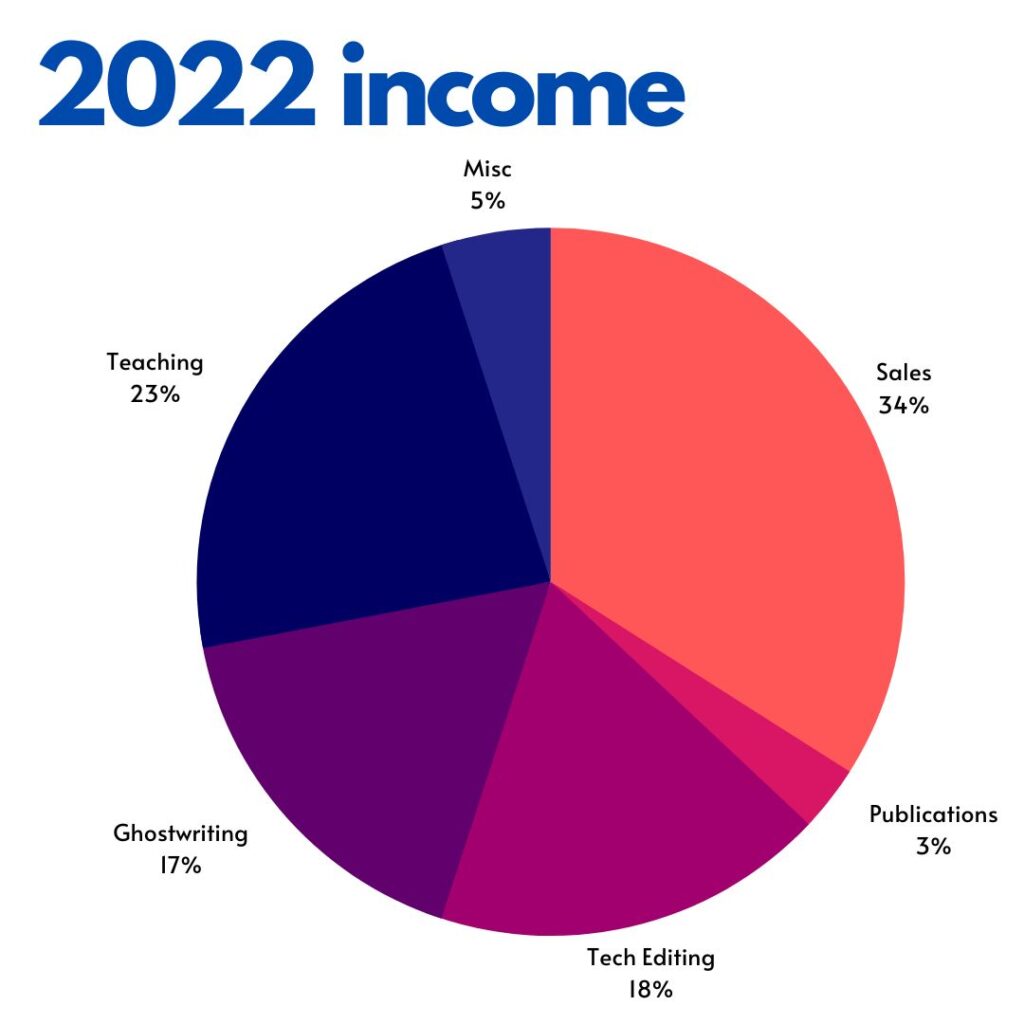
Sales – 34% (Last year: 36%)
My gross sales income was over $10,000, and came from six sources: my Etsy shop, Quilt Pattern Mart, wholesale orders, distributor orders, royalty payments (for a specific pattern), and in-person sales at lectures/workshops.
The majority of these sales were patterns, but this category also includes tiny art (from my 100 day project), workshop supply kits, and the sale of one finished quilt.
I released 3 patterns last year and now have 14 published patterns available in PDF and 12 available in print. This was my first full year being carried by Checker Distributors, which has been a positive relationship for me (and hopefully for them as well). In early December, I sent inquiries to two additional distributors and am hopeful that I will be in their catalogs soon.
I hope to add 4 more patterns to my catalog in 2023. I am also planning to transition my Etsy shop to a Shopify storefront. The Etsy shop will remain open, but I will use the Shopify store as my primary shop.
Publications – 3% (Last year: 2%)
These are patterns/tutorials/articles written under my own name, but for someone else. For 2022, this was a series of four “fundamentals” articles that I wrote for the Modern Quilt Guild, plus one of their quarterly “Block Study” patterns.
Tech Editing – 18% (Last year: 21%)
Ghostwriting & Design – 17% (Last year: 18%)
Tech editing and ghostwriting/design — the two primary “flavors” of services I provide to other quilt pattern designers — represented another ~1/3 or $10,000+ of my income in 2022. I continued to both work with previous clients and pick up new clients via referrals.
In the second half of the year, I began to scale back on ghostwriting projects. Frankly, some aspects of ghostwriting are enjoyable to me (doing the math, writing the instructions, creating graphics) and some parts are not as enjoyable (tedious layout and file prep)! So I will continue offering this service in 2023, but will focus on accepting projects that align with the parts I find enjoyable.
Teaching – 23% (Last year: 19%)
In 2022 I gave lectures to 13 different guilds and taught 1 virtual and 3 in-person workshops. I also raised both my lecture and workshop rates to reflect my increased experience and expertise (and plan to hold those rates for now).
I continue to enjoy teaching and as I mentioned in my 2023 goals post, I hope to be able to sustain something like 10-12 engagements per year.
Miscellaneous – 5% (Last year: 3%)
This category is the catch-all for anything that didn’t quite fit into one of the other categories — supply packs for workshops, prize money for my QuiltCon ribbons, Reels bonus payments from Instagram, and more. One item in this category was a tip that I received from a tech editing client, which was a lovely surprise!
—–
Expenses
My expenses this year totaled a bit over $7,000. The breakdown below DOES NOT include federal income tax. (And note that I live in Texas, which does not have state income tax.)
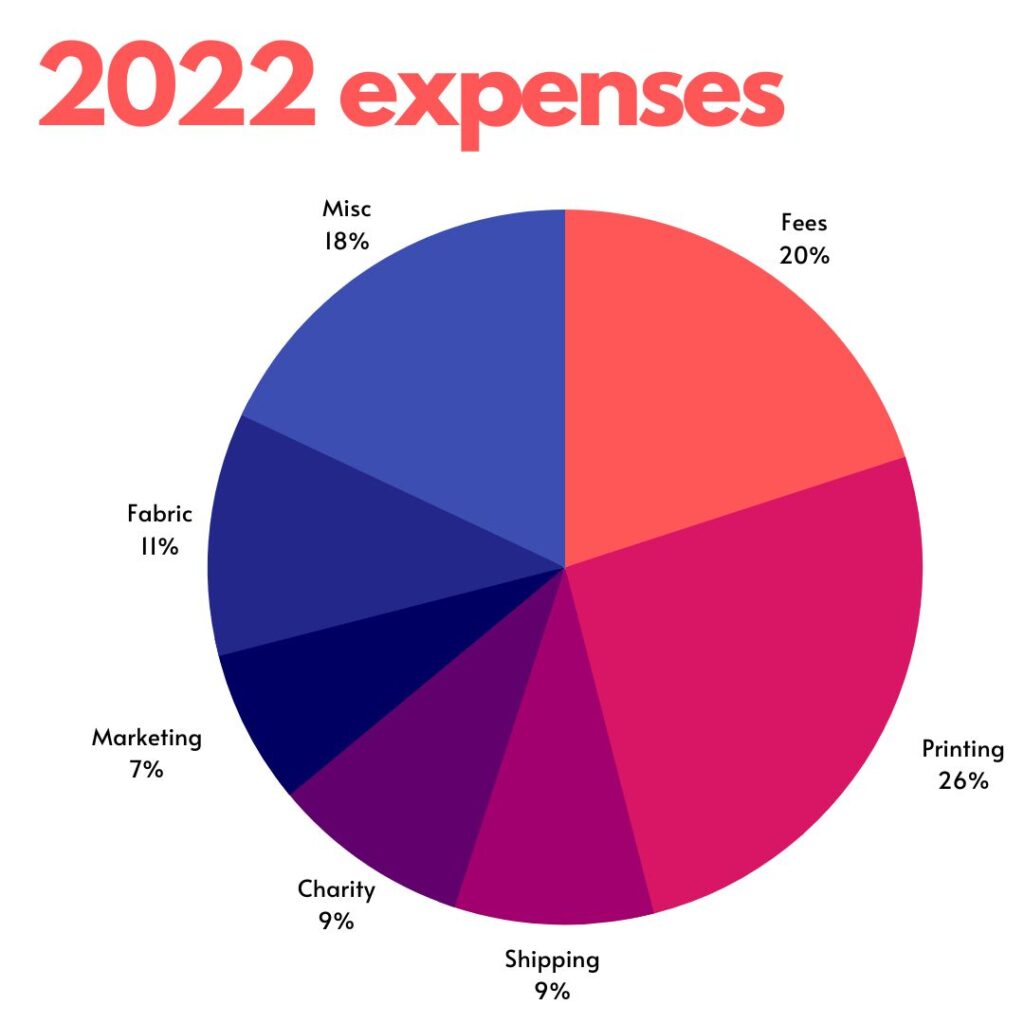
Fees & Commissions – 20% (Last year: 25%)
There are three primary sources of fees: Paypal (which I use for invoicing clients), Etsy (listing and sales fees), and Quilt Pattern Mart (banking/sales fees plus commission). Ultimately, these kind of fees are just a cost of doing business.
I will be transitioning to Shopify for my primary shop for 2023. This could result in either a slight increase or slight decrease in fees, depending on how sales go as the year progresses. Shopify has fewer fees per transaction than Etsy, but Shopify also charges a monthly fee while Etsy does not. I’ve been sitting around the break-even point for a while now, and have decided that there are a few other advantages to Shopify that make it worthwhile for me to risk a slight increase in fees.
Printing & Pattern Expenses – 26% (Last year: 22%)
This includes the cost for all of my print patterns and the cost of having new patterns tech edited. (To be clear, my print cost is a lot higher than the tech editing cost. I’m biased, but I will still shout from the rooftops that tech editing is a bargain for any pattern designer who wants to put out quality work!!)
Even with my distributor relationship, I am still small, and it has not made sense for me to print more than 100 copies of a pattern at a time. If my sales increase to the point where I’m able to order in batches of 500-1000, the cost per pattern starts to decrease quite a bit, but I don’t see that happening in 2023.
Shipping – 9% (Last year: 11%)
This includes both the postage I pay to mail print pattern orders and the shipping materials themselves like envelopes and pattern bags.
Charity – 9% (Last year: 38%)
My donations were more limited this year primarily because I fell out of the habit of choosing a charity to which to donate a portion of each month’s sales. I did still make several donations to organizations that I care about, including a $300 donation to Team Rubicon as part of my cooperation with Modern Service Quilts in November.
Marketing – 7%
The biggest expense in this category is my newsletter service (Flodesk) but it also includes promo materials like stickers for QuiltCon and business cards.
Fabric – 11%
My biggest purchase in this category — 2/3 of my fabric expense — was my Color Collective membership with Sewtopia, both Season 4 (which ended in spring 2022) and Season 5 (which started in November). It’s been a great way to build my solids stash, and I’m bummed that they’ve announced this will be the last season.
Beyond that, my fabric and materials expenses were minimal. I just didn’t make that many projects this year, and for a lot of what I did make, I was able to use scraps and/or fabric already in my stash. I’m still using extra batting that I inherited with my used longarm purchase in 2020. And as an Aurifil Artisan, I am compensated in thread.
Miscellaneous Expenses – 18% (Last year: 8%)
This category is another catch-all and includes things like web hosting, materials for my postcard supply packs, Zoom fees for the months I needed a pro account, and Quilt Market registration fees. I also starting paying $10/month for a virtual PO box this year.
—–
So that’s my 2022 breakdown! This is always a good exercise for me to look back and think about how I have earned and spent business money this year, along with what is and isn’t working. With 5 years of small business work under my belt, I also put together this graph showing my income growth. For what it’s worth, I think the large jump from 2020 to 2021 can be linked to significant increases in 1) my social media following, 2) overall pattern sales, and 3) teaching.
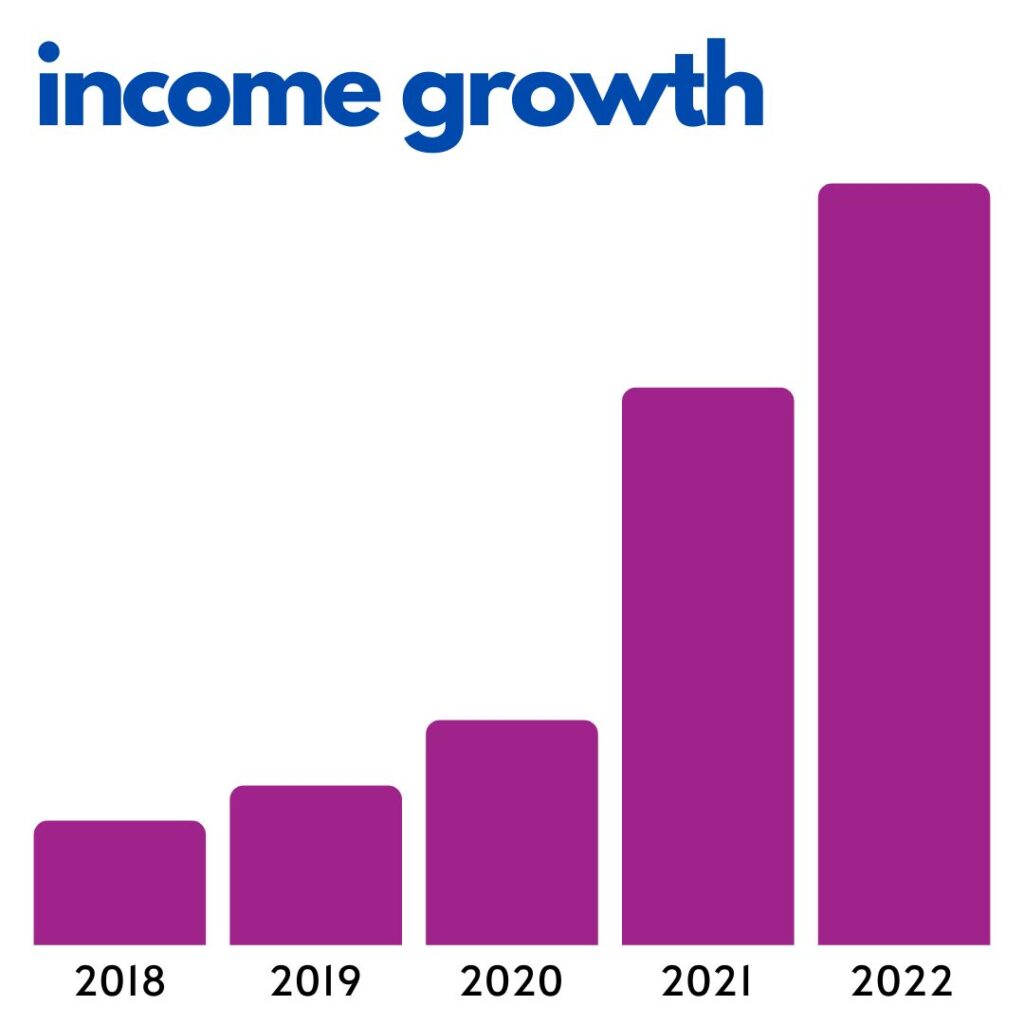
If you are reading this and trying to draw any parallels to your own creative business numbers, I think it’s important for you — and me!! — to remember that quilting is a small business for me that 1) I greatly enjoy, and 2) I absolutely need to scale to fit around the other important things in my life, i.e. my family and my day job/career. (Some weeks I succeed at that scaling/balance more than others.)
For 2023, I am focused on maintaining the status quo and/or possibly taking a slight step back in a few areas, particularly by continuing to enforce boundaries I established in spring 2022 regarding my tech editing and ghostwriting workload. I am not consciously trying to increase my income, but rather continuing to focus on the steady variety of things that have been working for a few years now.
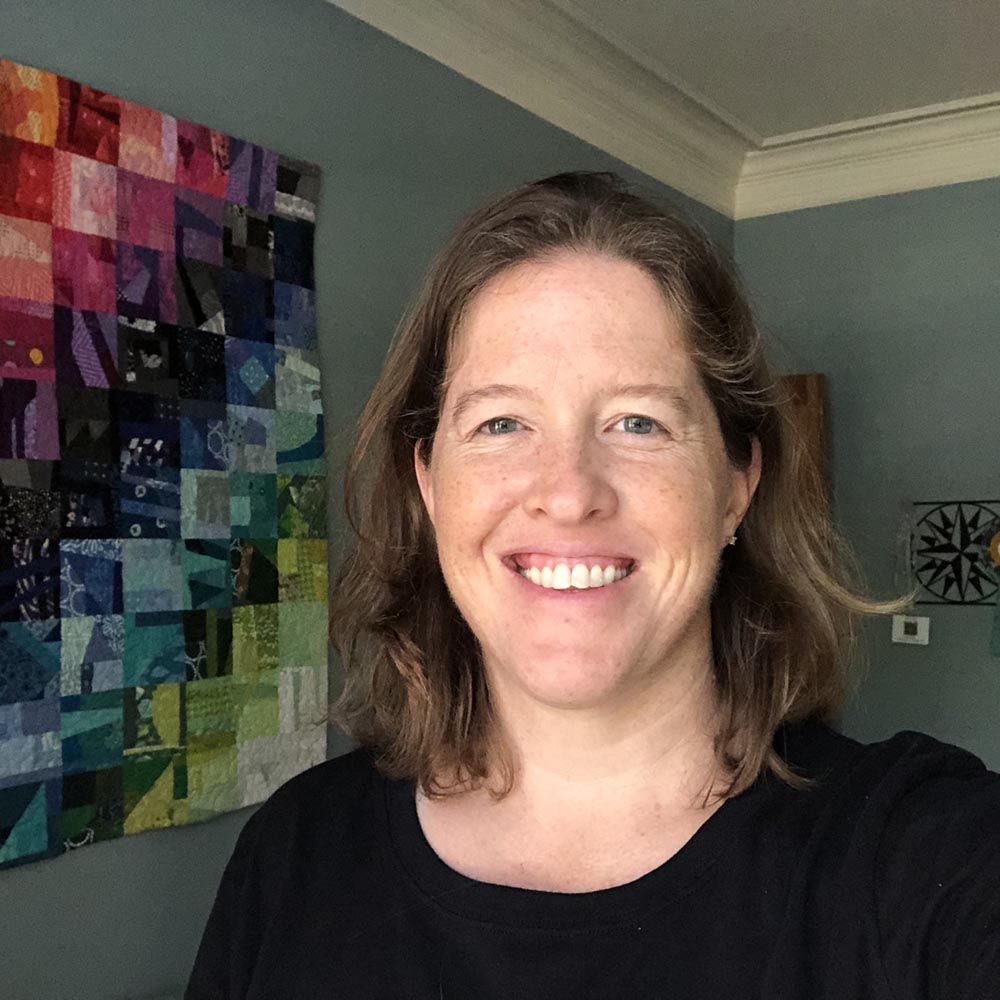

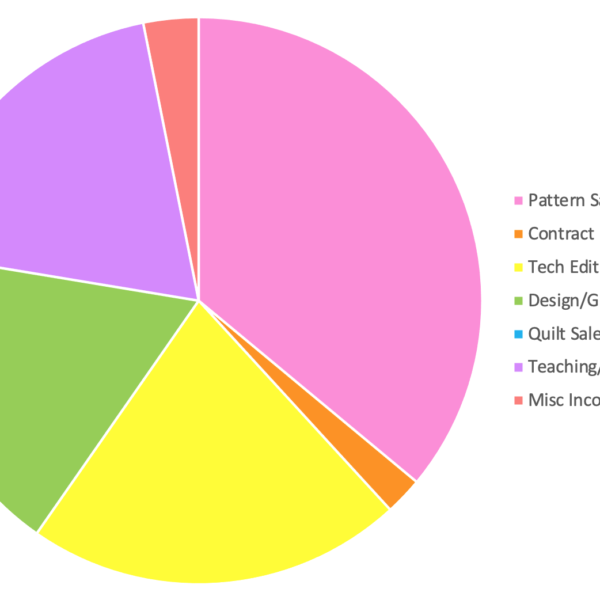

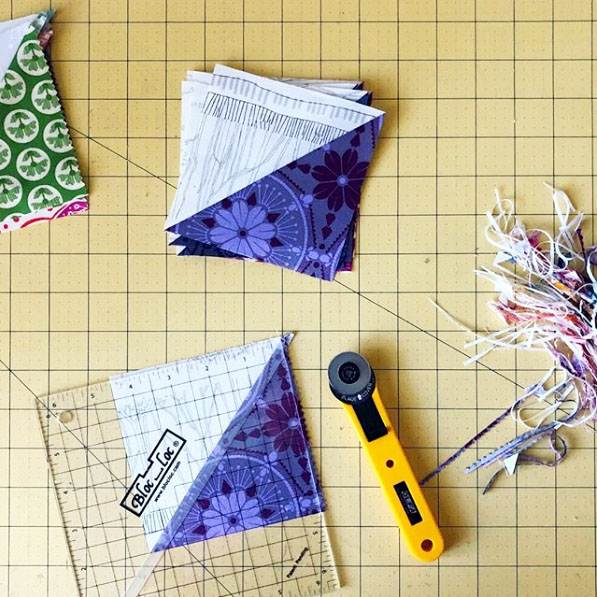





Thank you so much for sharing so openly about your income report. I know I am taking a hit on my overall income numbers by stepping back from teaching, so I definitely need to think about if that is something I can adjust and add back in moving forward. I’m impressed with all you can get done and have a full time job and prioritize your family! I do this full time and feel like I’ve hit a wall on the amount of work I can take on for others.
I have *definitely* bumped up against that wall, most notably in January & February last year — almost HALF of the entire year’s ghostwriting income came in those 2 months. I made myself miserable in order to meet the deadlines I had (over)committed to, so while Q1 was my highest earning quarter, it was absolutely not sustainable!! When I got back from QuiltCon, I set up some boundaries for myself that I stuck to for the rest of the year and plan to continue. So like you, I can’t really increase the editing/ghostwriting income any further due to lack of availability.
So for my income to increase in 2023 it’ll have to come from something else — more pattern sales (which seems possible) or more teaching (though I like the level I am doing now). The only new avenue I’m considering at the moment are a couple on-demand courses, but those obviously take a lot of time and effort up front so I don’t see that happening until at least spring or summer, maybe longer.
But like I said, an income increase isn’t really a primary goal this year. If anything, I suspect it might go down a bit. But we shall see!
Thank you so much for sharing. This is such great insight and is getting my wheels turning.